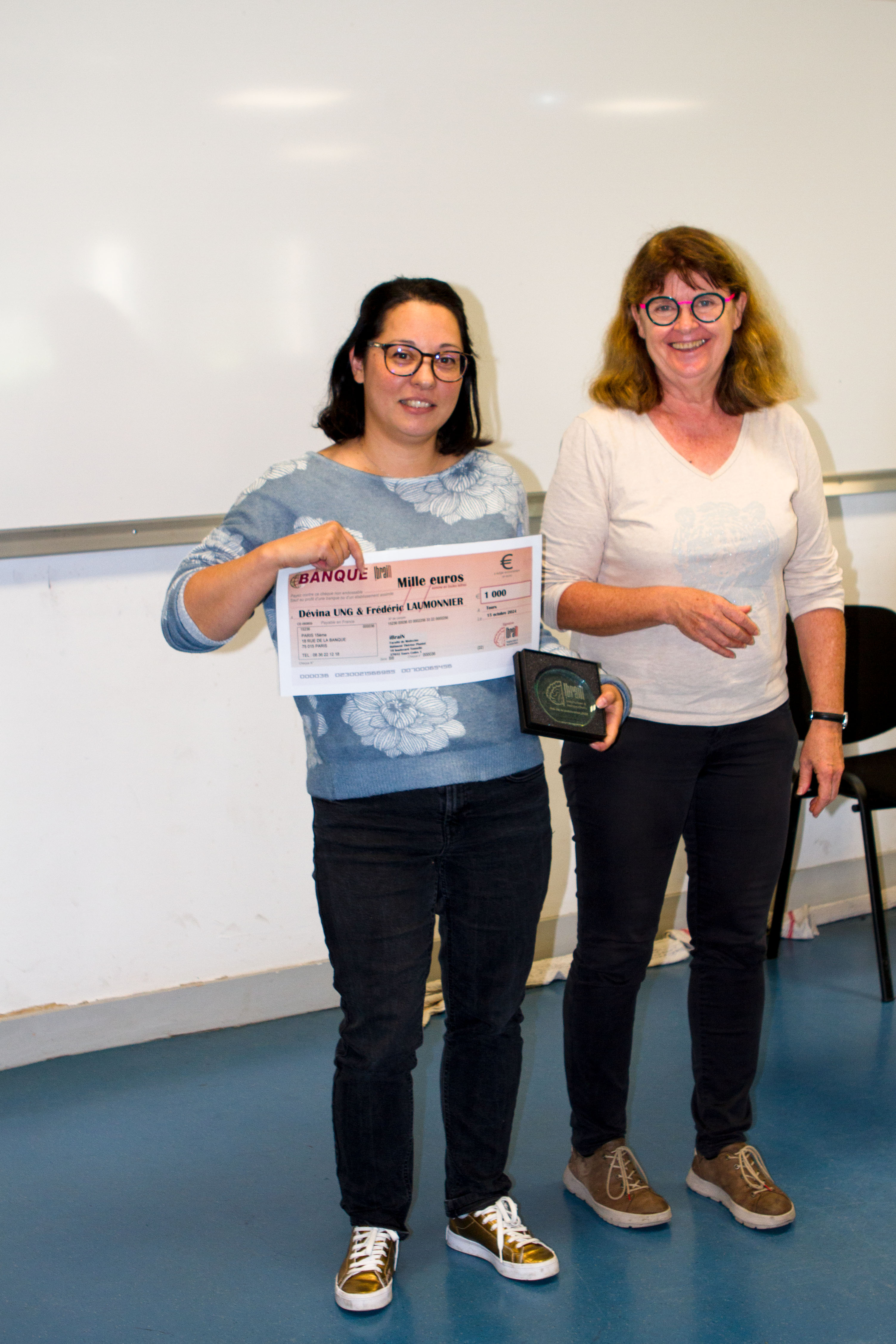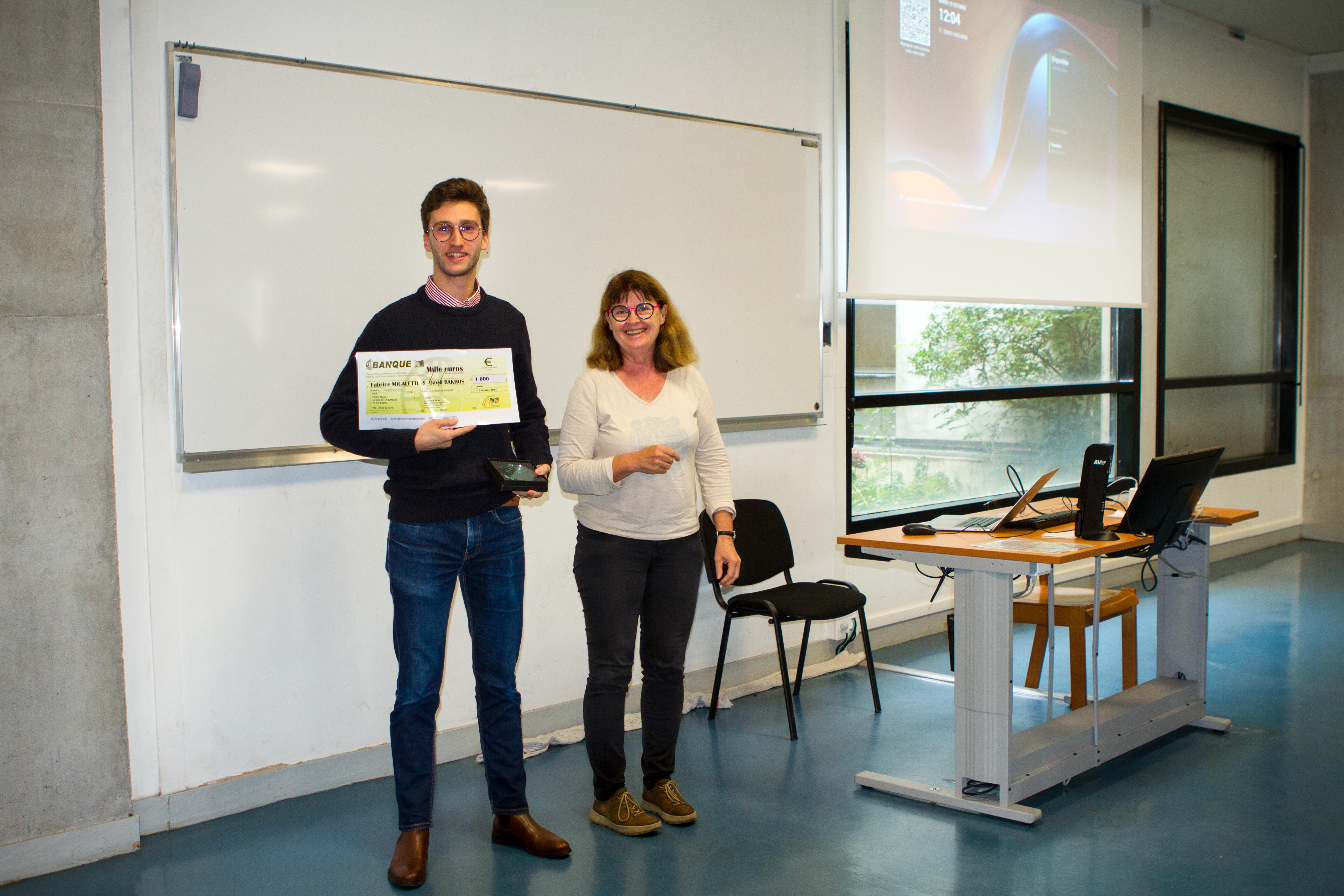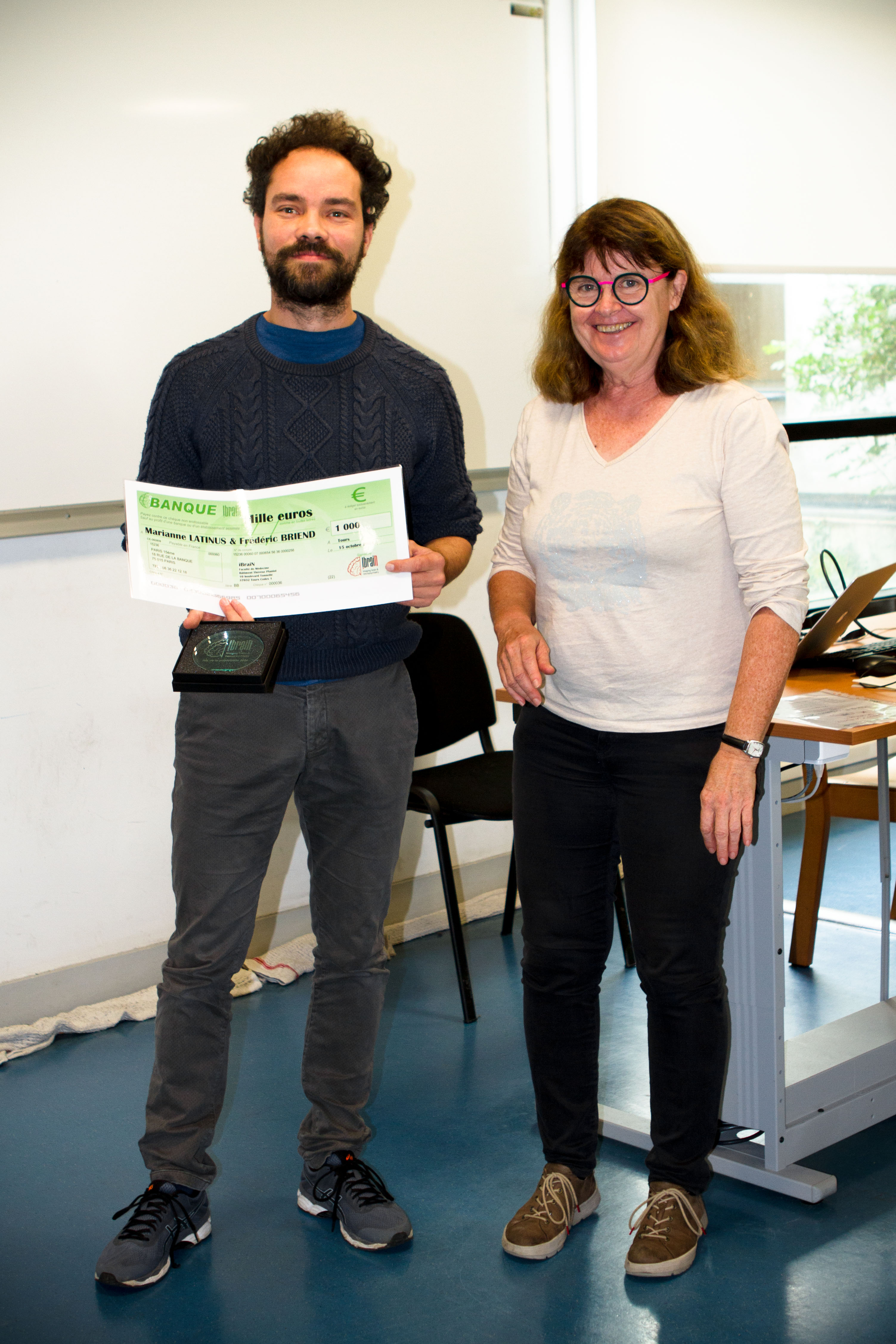
Dates
from December 31, 2024 to February 28, 2025
Congratulations to Dévina Ung, Fabrice Micaletti and Frédéric Briend
Dévina Ung
GRID1/GluD1 homozygous variants linked to intellectual disability and spastic paraplegia impair mGlu1/5 receptor signaling and excitatory synapsesMolecular Psychiatry, 2024
The ionotropic glutamate delta receptor GluD1, encoded by the GRID1 gene, is involved in synapse formation, function, and plasticity. GluD1 does not bind glutamate, but instead cerebellin and D-serine, which allow the formation of trans-synaptic bridges, and trigger transmembrane signaling. Despite
 wide expression in the nervous system, pathogenic GRID1 variants have not been characterized in humans so far. We report homozygous missense GRID1 variants in five individuals from two unrelated consanguineous families presenting with intellectual disability and spastic paraplegia, without (p.Thr752Met) or with (p.Arg161His) diagnosis of glaucoma, a threefold phenotypic association whose genetic bases had not been elucidated previously. Molecular modeling and electrophysiological recordings indicated that Arg161His and Thr752Met mutations alter the hinge between GluD1 cerebellin and D-serine binding domains and the function of this latter domain, respectively. Expression, trafficking, physical interaction with metabotropic glutamate receptor mGlu1, and cerebellin binding of GluD1 mutants were not conspicuously altered. Conversely, upon expression in neurons of dissociated or organotypic slice cultures, we found that both GluD1 mutants hampered metabotropic glutamate receptor mGlu1/5 signaling via Ca2+ and the ERK pathway and impaired dendrite morphology and excitatory synapse density. These results show that the clinical phenotypes are distinct entities segregating in the families as an autosomal recessive trait, and caused by pathophysiological effects of GluD1 mutants involving metabotropic glutamate receptor signaling and neuronal connectivity. Our findings unravel the importance of GluD1 receptor signaling in sensory, cognitive and motor functions of the human nervous system.
wide expression in the nervous system, pathogenic GRID1 variants have not been characterized in humans so far. We report homozygous missense GRID1 variants in five individuals from two unrelated consanguineous families presenting with intellectual disability and spastic paraplegia, without (p.Thr752Met) or with (p.Arg161His) diagnosis of glaucoma, a threefold phenotypic association whose genetic bases had not been elucidated previously. Molecular modeling and electrophysiological recordings indicated that Arg161His and Thr752Met mutations alter the hinge between GluD1 cerebellin and D-serine binding domains and the function of this latter domain, respectively. Expression, trafficking, physical interaction with metabotropic glutamate receptor mGlu1, and cerebellin binding of GluD1 mutants were not conspicuously altered. Conversely, upon expression in neurons of dissociated or organotypic slice cultures, we found that both GluD1 mutants hampered metabotropic glutamate receptor mGlu1/5 signaling via Ca2+ and the ERK pathway and impaired dendrite morphology and excitatory synapse density. These results show that the clinical phenotypes are distinct entities segregating in the families as an autosomal recessive trait, and caused by pathophysiological effects of GluD1 mutants involving metabotropic glutamate receptor signaling and neuronal connectivity. Our findings unravel the importance of GluD1 receptor signaling in sensory, cognitive and motor functions of the human nervous system.
Fabrice Micaletti
Microbubble-assisted ultrasound for inner ear drug deliveryAdvanced Drug Delivery Reviews, 2024

Treating pathologies of the inner ear is a major challenge. To date, a wide range of procedures exists for administering therapeutic agents to the inner ear, with varying degrees of success. The key is to deliver therapeutics in a way that is minimally invasive, effective, long-lasting, and without adverse effects on vestibular and cochlear function. Microbubble-assisted ultrasound (“sonoporation”) is a promising new modality that can be adapted to the inner ear. Combining ultrasound technology with microbubbles in the middle ear can increase the permeability of the round window, enabling therapeutic agents to be delivered safely and effectively to the inner ear in a targeted manner. As such, sonoporation is a promising new approach to treat hearing loss and vertigo. This review summarizes all studies on the delivery of therapeutic molecules to the inner ear using sonoporation.
Frédéric Briend
Voice acoustics allow classifying autism spectrum disorder with high accuracyTranslational Psychiatry, 2023

Early identification of children on the autism spectrum is crucial for early intervention with long-term positive effects on symptoms and skills. The need for improved objective autism detection tools is emphasized by the poor diagnostic power in current tools. Here, we aim to evaluate the classification performance of acoustic features of the voice in children with autism spectrum disorder (ASD) with respect to a heterogeneous control group (composed of neurotypical children, children with Developmental Language Disorder [DLD] and children with sensorineural hearing loss with Cochlear Implant [CI]). This retrospective diagnostic study was conducted at the Child Psychiatry Unit of Tours University Hospital (France). A total of 108 children, including 38 diagnosed with ASD (8.5 ± 0.25 years), 24 typically developing (TD; 8.2 ± 0.32 years) and 46 children with atypical development (DLD and CI; 7.9 ± 0.36 years) were enrolled in our studies. The acoustic properties of speech samples produced by children in the context of a nonword repetition task were measured. We used a Monte Carlo cross-validation with an ROC (Receiving Operator Characteristic) supervised k-Means clustering algorithm to develop a classification model that can differentially classify a child with an unknown disorder. We showed that voice acoustics classified autism diagnosis with an overall accuracy of 91% [CI95%, 90.40%-91.65%] against TD children, and of 85% [CI95%, 84.5%-86.6%] against an heterogenous group of non-autistic children. Accuracy reported here with multivariate analysis combined with Monte Carlo cross-validation is higher than in previous studies. Our findings demonstrate that easy-to-measure voice acoustic parameters could be used as a diagnostic aid tool, specific to ASD.
Contact :
Catherine Belzung : catherine.belzung@univ-tours.fr



